Using the data compiled from the UT60 thermal testing I have compiled the following tables in an attempt to show another way how the UT60 performance varies against itself at the flow rates and fan speeds tested. First let’s start off with the raw performance numbers:
We use these relative to each other to show percentage gains relative to a reference point. It’s an interesting way to show gains/losses while changing a variable. This first table shows performance gain or loss relative to 1.0GPM flow rate for the push/pull numbers:
This shows that increasing flow to 1.5GPM has little gain while lowering flow to 0.5GPM does affect performance more. The 1.5GPM@750RPM result being negative could be measurement error, most likely due to some slight heat dump from the pump not being accounted for.
We can also focus on 1300RPM as our reference and see how much gain or loss in performance we get by changing fan speed:
As expected the change is dramatic. Lastly we can combine both and choose 1300 RPM and 1.0 GPM as our reference point to show both effects concurrently:
So from the data above we can get a very good idea of how the UT60 performs relative to itself. But there is a large selection of 360mm radiator models to choose from, released from numerous manufacturers. So, we need to start comparing performance between them. To see how the UT60 performed against the other radiators in this group I have included the averaged flow rate comparison charts from the Round Up.
Let’s start off in table form showing each data test point as a percentage of the best result in each category:
We know that the flow rate has little impact on thermal performance so from here on out we will be averaging the 3 flow rate results in push/pull to give us a good look at head to head performance at the rpm speeds tested at with even less error.
Knowing relatively how well a radiator does though doesn’t really give a complete feel for how it compares across the whole field. So let’s take a look at Push Data only and let’s start with 750RPM:
Here the UT60 performs solidly – not close to the top, but percentage wise it’s about 10% behind the leading radiator in this category. At 1300RPM this thick radiator should improve:
The UT60 matches up to expectations, now at 10th place and in the top half of the field it is now 9% behind the extremely well tuned EK XE radiator. AT 1850RPM we’d expect it to push up the rankings again:
However the UT60 remains in 10th place and remains 10% behind the lead.
Now let’s take a look at push/pull performance to see whether the extra static pressure will help the UT60 perform any better – again let’s start with 750RPM:
Like it’s fatter stablemate the Monsta – the UT60 does very well at 750RPM in push/pull. Here in fifth place it is only 2.5% behind the leading XE radiator. AT 1300 RPM, like the Monsta, the UT60 starts dropping behind again.
In 11th place and 8% behind the lead we can expect the trend to continue:
10th place and 10% behind isn’t bad when you consider that the two top spots are radiators that are very optimized for high static pressure and airflow.
The next plots combine the push and push/pull results at 1GPM – therefore they get very busy very quickly. Push/Pull results are blue and push results are red:
1300RPM:
1850RPM:
Now if you’re still reading we tried to make all this data a bit simpler to understand. All the percentage scores were averaged giving us the Averaged Performance Factor of each radiator for both push and push/pull. This way of looking at the comparison takes away any advantages that a radiator may have at higher or lower fan speeds and looks at an overall average. While this appears fair it does tend to favor those radiators that are all rounders and those radiators which do very well at high RPM. Most users should be more focused on their specific use case. Check in the Round Up for performance comparisons at every gpm/rpm combo for even more details and cross comparison results. First let’s take a look at the Push Data:
For Push – we see that the UT60 places solidly above average. Now the Push/Pull – 92.7 is a good score and is again solidly above average:
Next up – Summary!








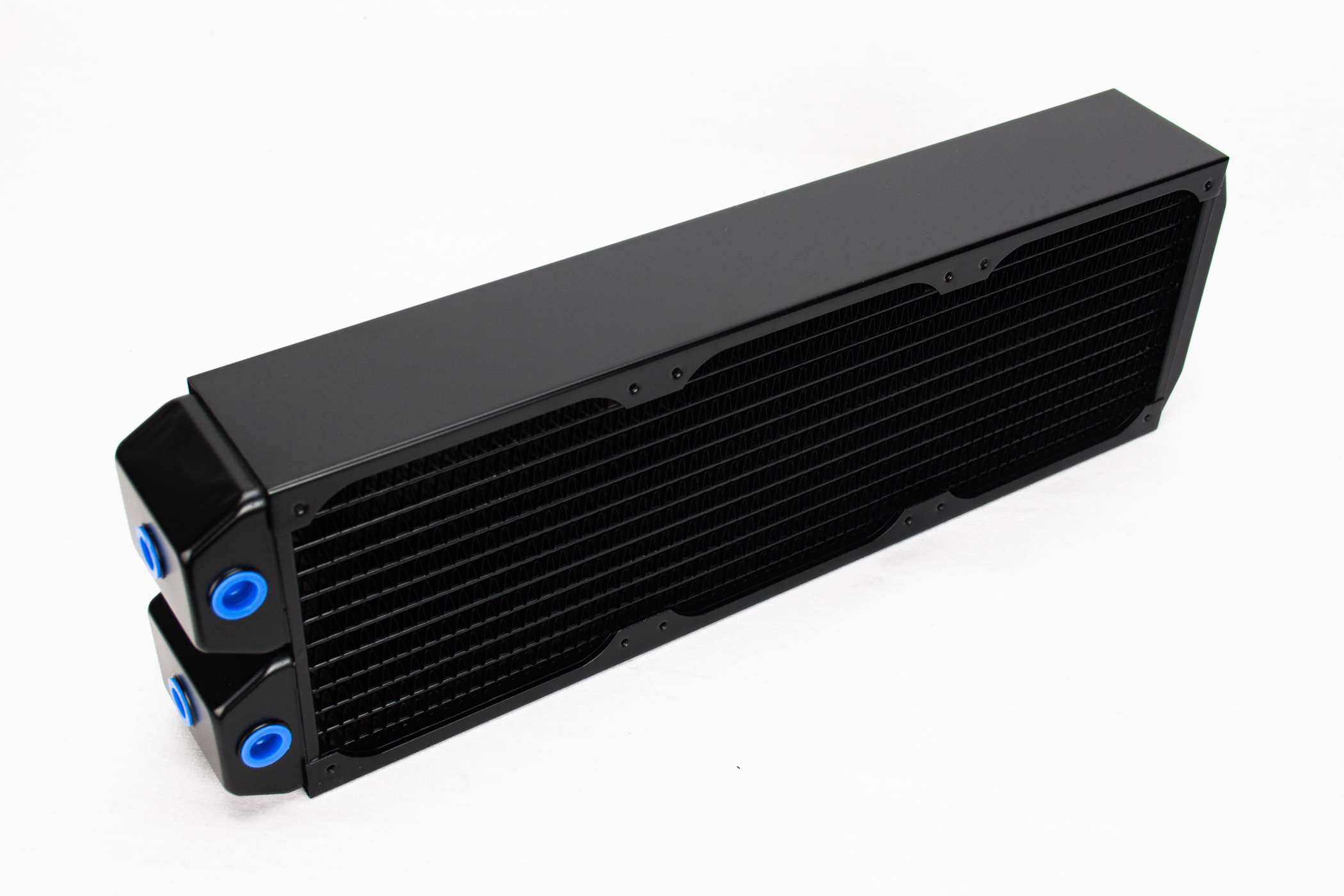
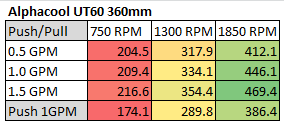
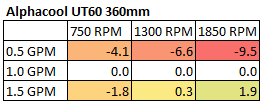
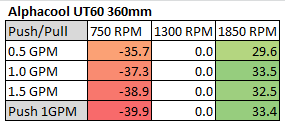
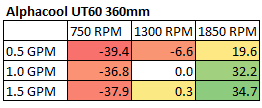
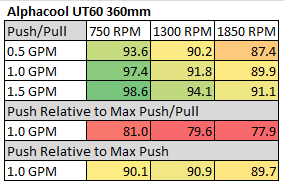
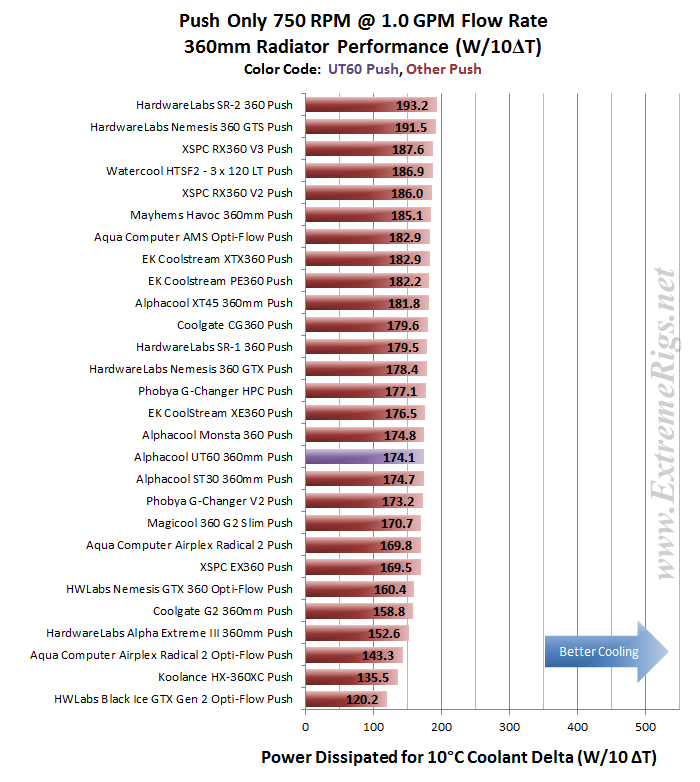
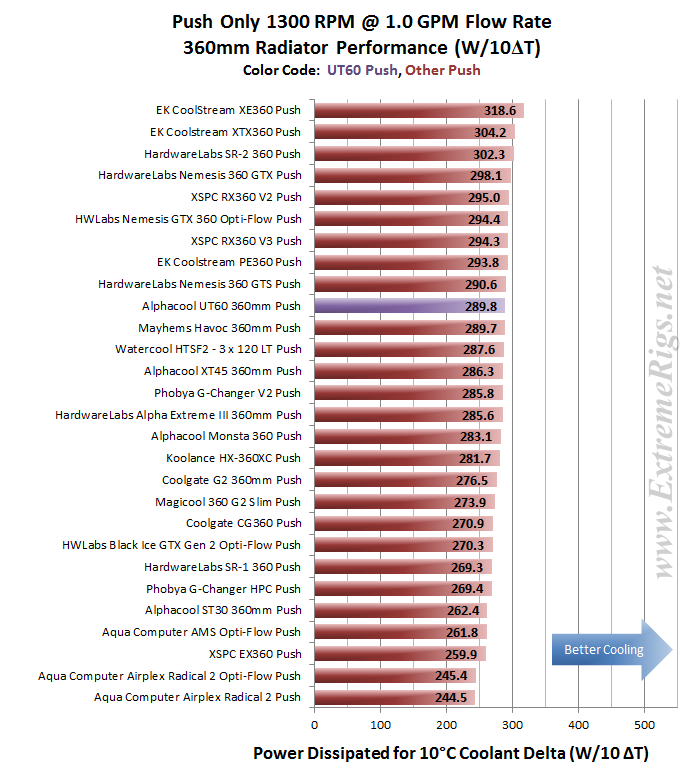
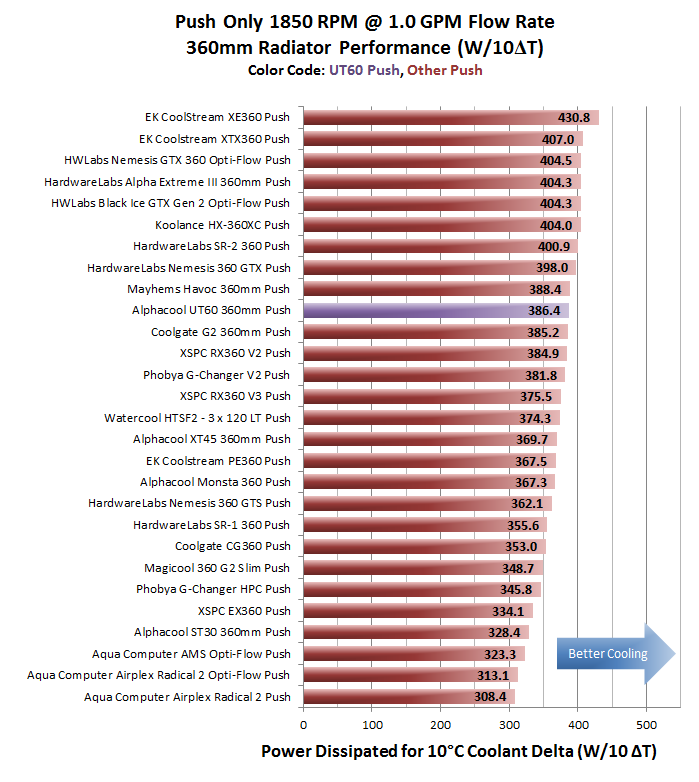
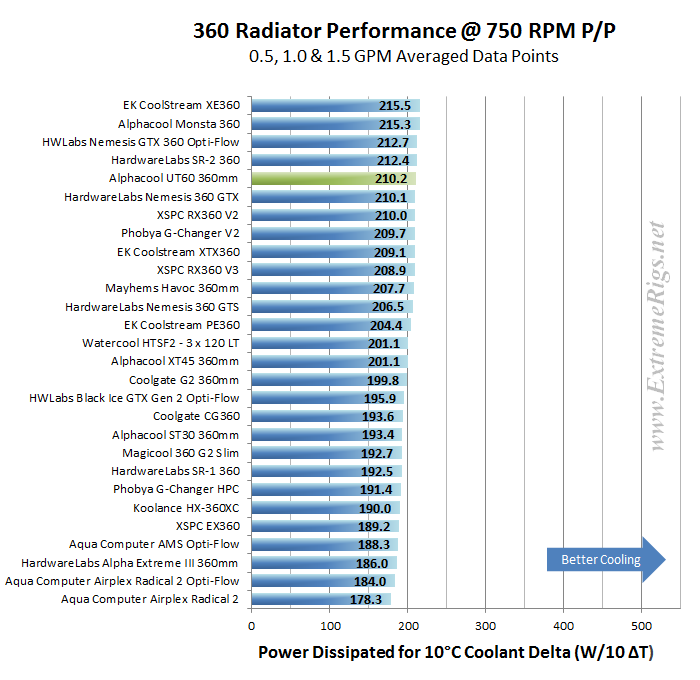
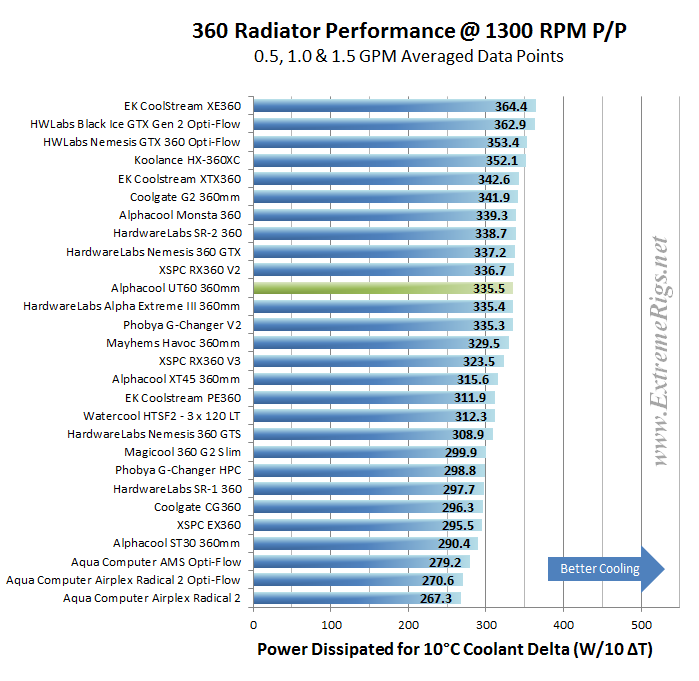
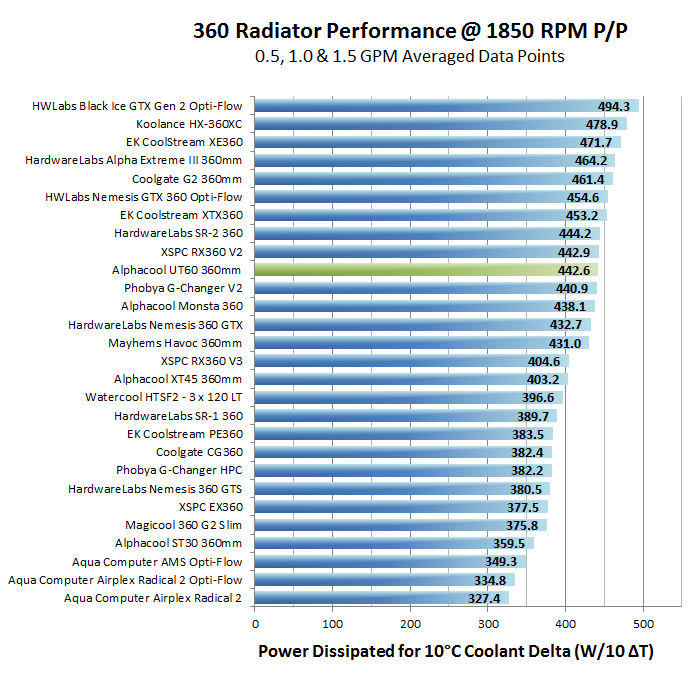
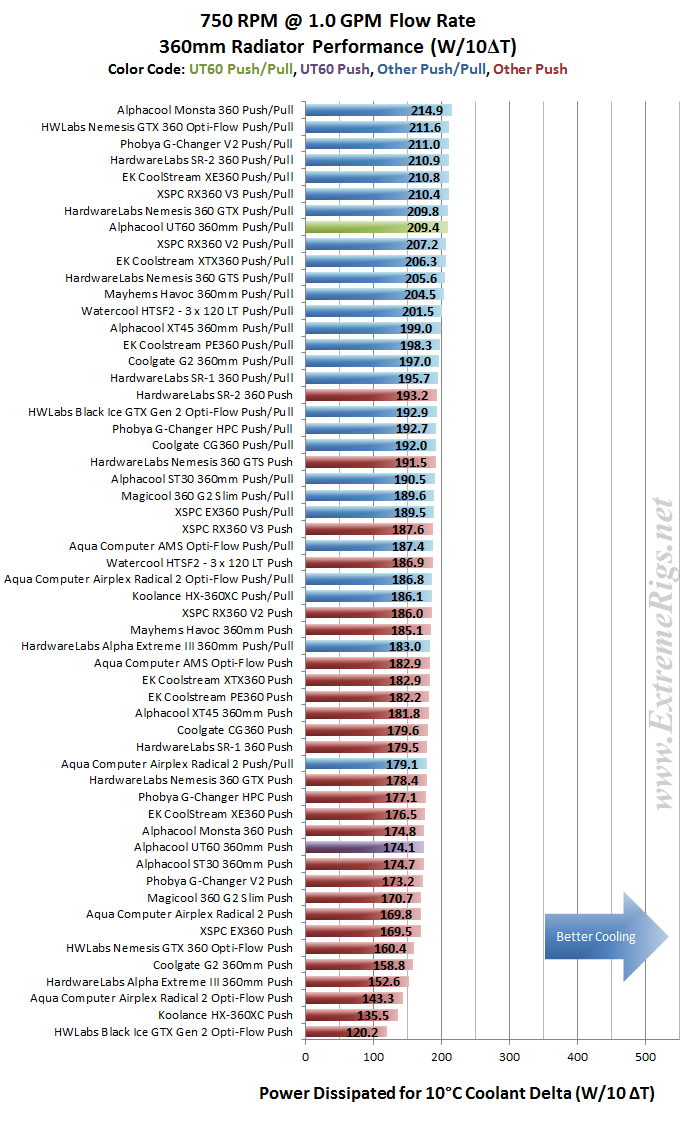
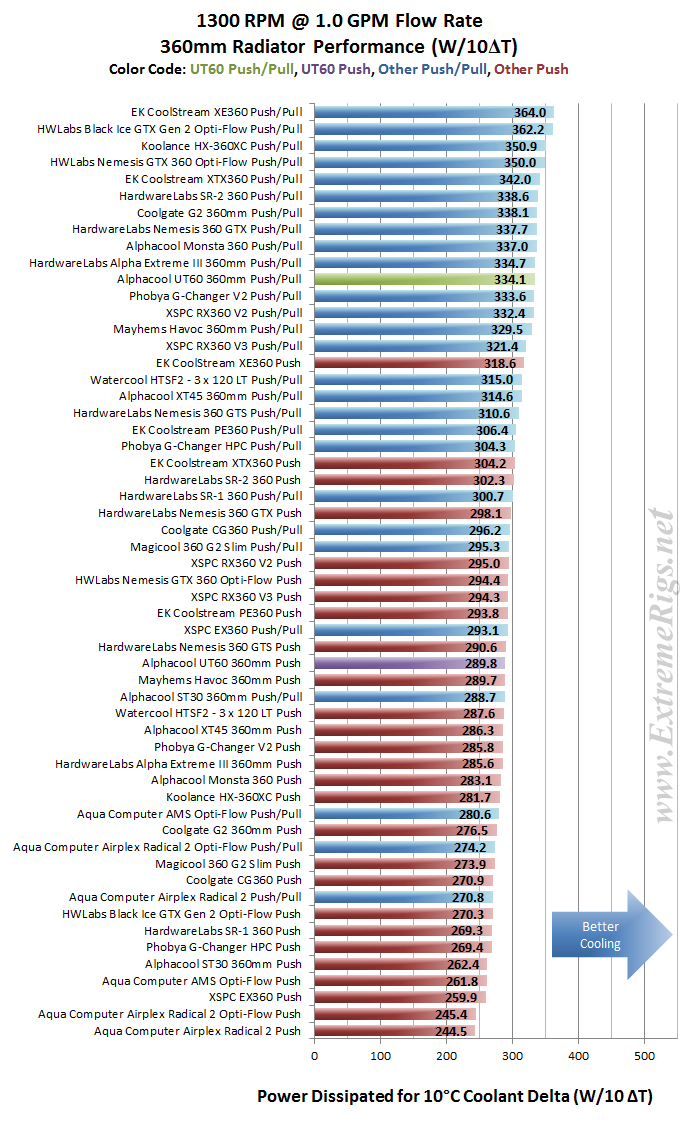
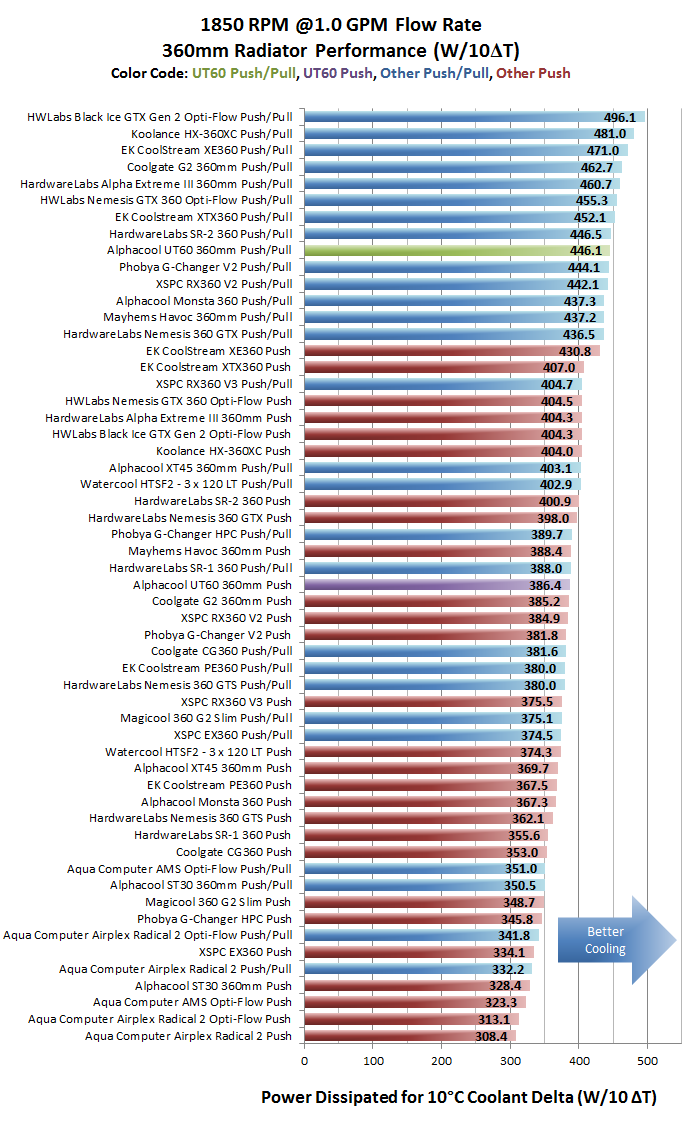
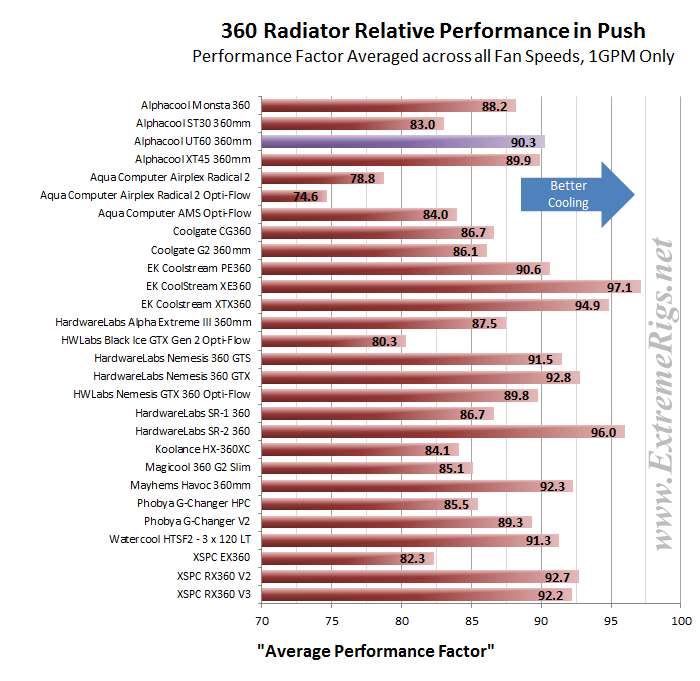
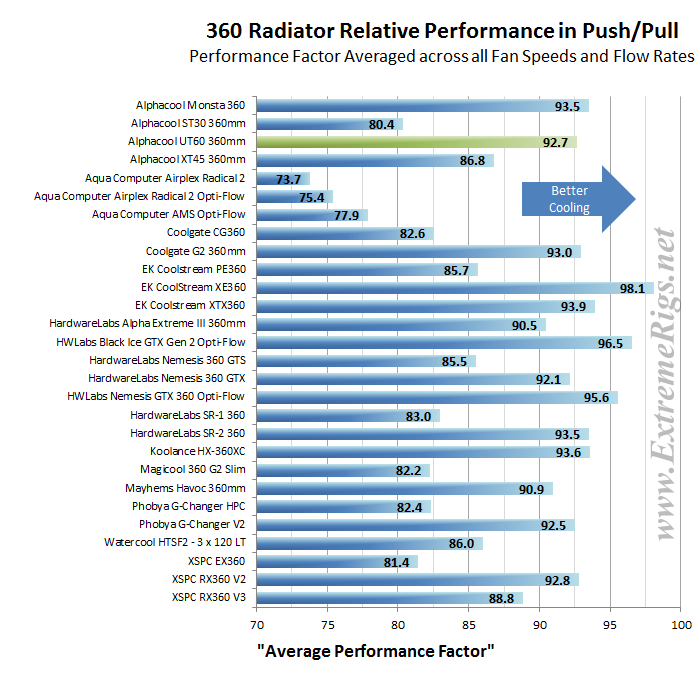




[…] Alphacool UT60 360 Radiator Alphacool XT45 360 Radiator Coolgate G2 360 Radiator EK PE 360 Radiator Hardware Labs Alpha Extreme III 360 Radiator Hardware Labs Nemesis GTS 360 Radiator Hardware Labs Nemesis GTX 360 Radiator Hardware Labs SR-1 360 Radiator Koolance HX-360XC 360 Radiator Magicool G2 Slim 360 Radiator Mayhem’s Havoc 360 Radiator Phobya G-Changer V2 Full Copper 360 Radiator Watercool HTSF2 3×120 LT 360 Radiator XSPC EX 360 Radiator XSPC RX v3 360 Radiator […]
Comments are closed.